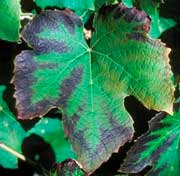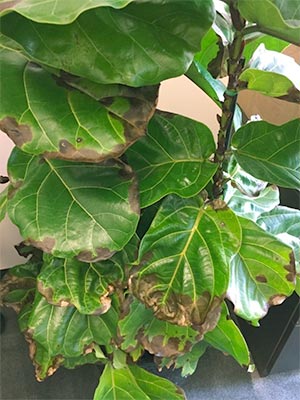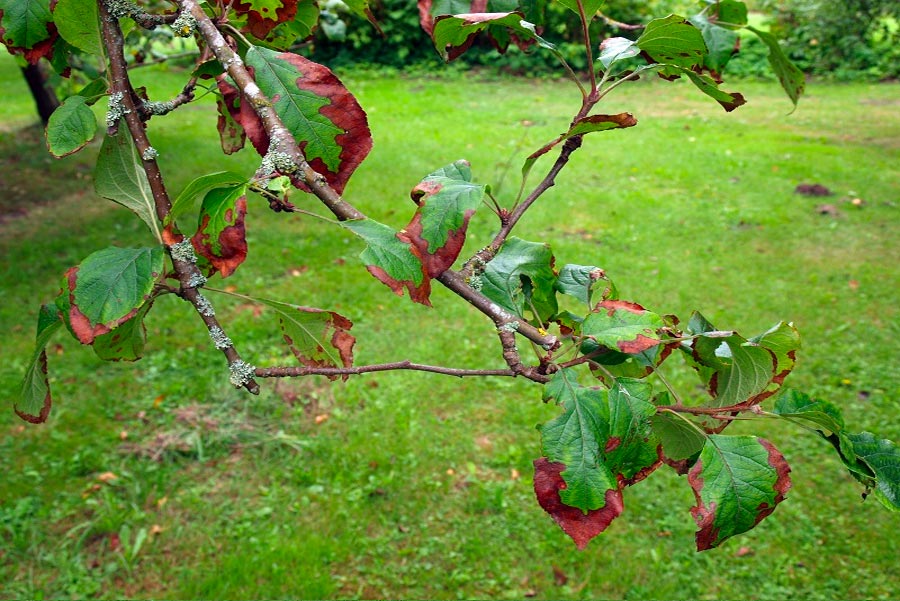“Help! – The Leaves on My Plants Have Brown Edges and Tips”
 Checking your plants routinely for any changes is a fantastic method to catch diseases and other problems early on. Making time to walk around your garden and observe is truly worth it; good garden care relies on it. You’ll also be able to see your plants develop much more closely and you’ll also be able to identify problematic areas of the garden as well as individual plants. Not just that, a healthy garden will attracts bird and wildlife in general.
Checking your plants routinely for any changes is a fantastic method to catch diseases and other problems early on. Making time to walk around your garden and observe is truly worth it; good garden care relies on it. You’ll also be able to see your plants develop much more closely and you’ll also be able to identify problematic areas of the garden as well as individual plants. Not just that, a healthy garden will attracts bird and wildlife in general.
Being able to diagnose these problems properly is one of the key ways in which you can help them have a long and healthy life. However, many people usually mistake one problem for another and end up treating the plant in the wrong way. This means the original issue doesn’t get addressed and more often than not, further damage will be caused as a result. The initial reaction might be to pull out the shears or secateurs and simply remove these problems.
One problem which we continually see to be incorrectly diagnosed is brown tips and edges on leaves. We’ll run through this now to highlight just how important a correct diagnosis is.
A Common Misconception
When gardeners see parts of the plant’s leaves turning brown, they automatically jump to a conclusion; diseases or pests(pest control is probably more dangerous to conclude if you prefer the use of chemicals).. Now, whilst this may be in true in some cases, it’s not always that straight forward.
Take a second to really evaluate the problem. For example, an entire leaf that has turned brown is a completely different problem to the edges or tips turning brown. If the whole leaf is brown, then you’ll have to do far more research because there are dozens of reasons that could cause that. However, when just the tips or edges of the leaves are browning, this points to a single problem – stress, much different to burnt leaves which can be read about here.
Yes, plants can become stressed, they’re no different to us, it could honestly be as simple as you’ve used the hose pipe or watering can too much . And just like you and me, we feel stress in different ways and guess what? So do plants. This makes narrowing down a cause a bit harder since there are several possible reasons as to what has elevated a plant’s stress levels.
Analysing the Cause of the Problem
This is where you analyse the possible reasons and see which one is most likely given the situation. Brown edging or tips on leaves are most commonly caused by a lack of water which results in stress. The following reasons for this condition are as follows:

- Lack of rainfall – If there isn’t enough natural water getting to the plants; this could be one of the causes. This problem will be extremely obvious in dry spells. Here’s a great article on how to help plants through a drought. Supplement rainwater manually with a watering can from a water butt or tap water if need be. A plant pot saucer will certainly help conserve water. You should also consider taking a look on our article of how to help wildlife through a drought, it’ll also help you with the garden overall.
- Constricted roots – There’s a common problem with plants that have been grown in small plant pots where the roots have hit the edge and not been able to grow any further. Consider larger pots and directly planting. The same problem is also apparent where soil conditions are heavy and clay-like. Water more to ensure roots get the water they need or consider replanting somewhere which offers more room for the roots to grow. Alternatively, use a self watering trough to attempt to regulate the water better
- Damaged roots – This is likely to be caused by flooding or not enough breathing room in the soil. When roots become damaged they struggle to pick up water efficiently leading to a lack of water. To correct this problem, address the issue with the roots and at the same time cut back some of the plant so it has lower water requirements until it has fully recovered. One problem I actually had was using an automatic watering system whilst on holiday I caused my own problems. Unfortunately we had a wet couple of weeks and this pushed my plants to the limit. Luckily, easing off the watering did resolve most issues, though I did lost a couple of hanging baskets that weren’t looking too happy.
- Poor soil – Some soils struggle to maintain moisture (known as sandy soils) and symptoms of potassium deficiency include the ‘scorching’ of leaf edges. Try these steps and methods to improve the quality of the soil; until then, water regularly to ensure the roots get what they need.
It should become apparent which is the reason behind the problem, but when unsure, work from the most common to the least common. The above solutions should rid your plant’s leaves from any brown edging or tips! Be sure to catch the dead leaves with our quality leaf collector or blower.
